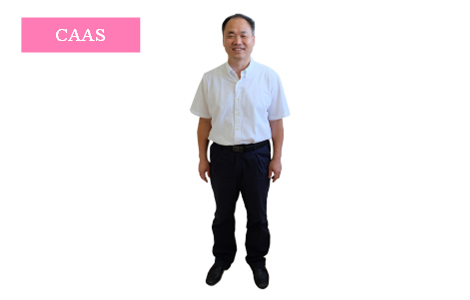PARK Yong Koo

- 役職/
Position - Former Visiting Professor (Professor at Hankuk University of Foreign Studies)
- 研究分野/
Field - Japanese Culture
To Promote the Mutual Understanding between Korea and Japan via Intercultural Communication
1. Research Interests and Teachings at TUFS
The international relationship between Korea and Japan cooled down. While it is true that the most recent cooling off has been occasioned by disagreements about "History and Territory" between the two countries, it remains vivid in my memory that its source goes far back into the 1982 incident of Japan distributing history textbooks that were deem to include distorted historical facts about Korea. This happened when I was a sophomore at HUFS, and I inquired about the reason why this kind of problem occurs.
My inquiry led me to consider the contrast between the historical facts and their interpretations. I came to realize that the trouble lies not so much in the facts but rather in their interpretations. The discussions on the relationship between Korea and Japan cite various sources and documents, but even the identical material affords contradicting interpretations, depending on whose side one is on. The root of it all, I think, has to be distrust about the opposing party. This recognition developed into my research interest on the mutual understanding between Korea and Japan. My research in this respect has been to study the mutual understanding and their discrepancies between the two countries and the sources. One of the results from my research has been that the cool breeze between the two countries cannot be studies without also including countries like China and more broadly the Eastern Asian countries. The outcome was to develop a course, entitled "Mutual Understanding among Korea, Japan, and, China" and I offered it thankfully at TUFS.
Another course that I offered was "Theories on the 21st Century Japanese." The research I have been conducting on the mutual understanding between the two forced me to realize that Korean and Japanese are alike, yet they are also quite different, and the differences remains fresh in my mind. Theories on the thinking of Japanese and their ways of doing things became the focus of my research. The course title "the 21st century" indicates that the theory that encourages to see Japanese as being "collective" has had its time, but the 21st century is the time to move on from this old paradigm.
Between the two courses that I offered at TUFS, the 21st century Japanese is more aligned with my current research than the mutual understudying course. It is certain, though, my researches are geared toward getting rid of misunderstanding between Korea and Japan. And this is ultimately to harmonize the communication between the two countries through intensifying their mutual understanding.
2. To Strengthen Japanese Dispatch Capabilities
Adoption of the foreign cultures and the localization processes highlight the history of Japan. Korea and China for the ancient Japan, European countries for the modern Japan, and America for the contemporary Japan has been the old sources of unique Japanese culture with sophistication. Japan, one of the wealthiest countries in the world currently owns an appropriately rich cultural contents, living up to its size of economy. It surprises no one that Japan wishes for a stronger dispatching capabilities and powers amongst international countries and their groups. Nonetheless, such capabilities are of less importance than the dispatchable contents. This is so because the dispatching power will be determined not merely by the dispatching frequencies, but also by the willingness at the receiving parties. It is then incumbent to develop the internationally circulating dispatchable content, making good use of the Japanese culture's unique merits that were shone through the processes of adoption and localization of foreign cultures. I anticipate your active participation on promoting the communication among Japan and the communities of the world at the Unit of CAAS, where the scholars and researchers take part in.
3. My Impressions of the TUFS and the TUFS students
The campus, while it cannot be said that it is huge, its building and their arrangement have a lot to be said about. Of these, I am most impressed with the fact that campus buildings are placed in such a way that they are all connected. This placement of buildings kept me dry even on those days of heavy rain on my walk to the dorm. My semester here allowed me to interact with many students from overseas. The growing number of the TUFS students going oversea to study indicates to me that TUFS is evolving into one of the global institutions of higher learning. All of the graduate students in my seminars have had experienced life in other countries, and they participated in the class by expressing their views, basing them on their own experience. The students who are studying diligently at the library were not the only ones on campus. There were also those who were participating various physical activities on campus. I would without hesitation name TUFS a "small but very strong global institution of higher learning."
4. The Strengths and the Deficiencies of Japan, Seen Without
Koreans view Japan as having two sides: (1) Japanese are kind, diligent, and courteous, but (2) Japan is militant, nationalistic, and suffers from hegemonism. They feel more affected with the Japanese than they do with Japan the nation. I might add, focused on the theories of Japanese the following. The high context culture of Japanese, which preferrers the communication via mood--rather than it via words--can be difficult to foreigners.




